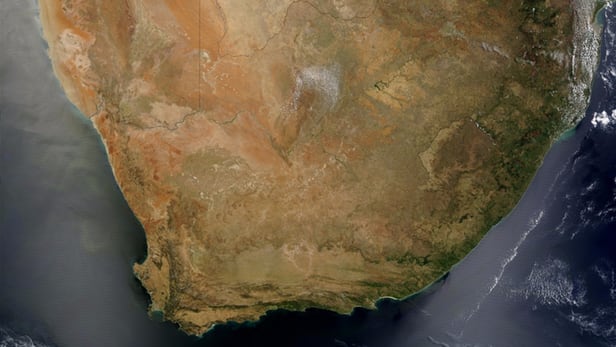NASA probes Namibian clouds to help predict future climate models

NASA’s ORACLES research aircraft will probe clouds in Walvis Bay, Namibia (Credit: NASA)
NASA has taken two of its research aircraft and a bunch of
scientists to the coast of Africa to study minute particles
suspended in the atmosphere known as aerosols. The aim of the
ORACLES (Observations of Aerosols Above Clouds and their
Interactions) project is to provide a better understanding of
how aerosols interact with clouds, and how cloud behavior is
directly or indirectly changed.
NASA says that Walvis Bay in Namibia is one of three locations in the world with persistent low-level clouds, and the only one of those with a steady flow of aerosol particles into the atmosphere, thanks to smoke from inland fires. The cloud layers are said to thicken away from the coastline like a wedge, gradually mixing with aerosols and offering scientists progressively changing conditions for study.
As such, principal investigator Jens Redemann says that the
location is "the perfect natural laboratory to study
aerosol-cloud interactions, which are some of the largest
uncertainties in the prediction of future climate."
Aerosols rising into the atmosphere can be of natural origin,
such as dust and sea salt, or produced as a result of human
activity, like soot and smoke from fire and industry.
"Human activities currently are estimated to be responsible for perhaps half of all the aerosol particles in the atmosphere," says cloud scientist Robert Wood. "Smoke particles both reflect sunlight back to space, thus cooling the Earth, and absorb sunlight, which has the opposite effect of warming the Earth. When aerosols encounter clouds, they also change the properties of the clouds they are ingested into."
The two research aircraft that NASA has deployed to the
region are its P-3 and ER-2 and, unlike satellites that may only
pass overhead once every day, it's expected that they'll be able
to study the area throughout the day to build a complete picture
of aerosol behavior in clouds.
The P-3 carries five remote sensing instruments and will take measurements from over a dozen probes attached to wings and window inlets as it flies to an altitude of up to 20,000 ft (6,000 m). The ER-2 will fly up to 65,000 ft (19,800 m) and take readings similar to those made by satellites.
NASA says the aim of the ORACLE's flights is to complement and validate satellite observations and to test instruments that may go on to be used by future satellites. It is also hoped that the project will help improve regional and global computer models that predict climate change.
Source: NASA
